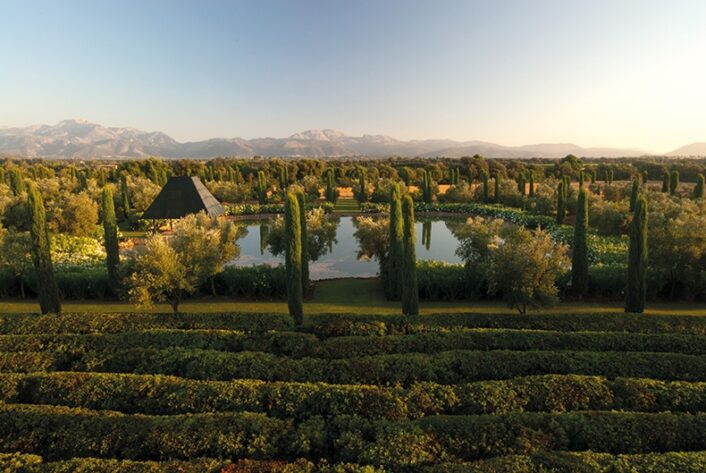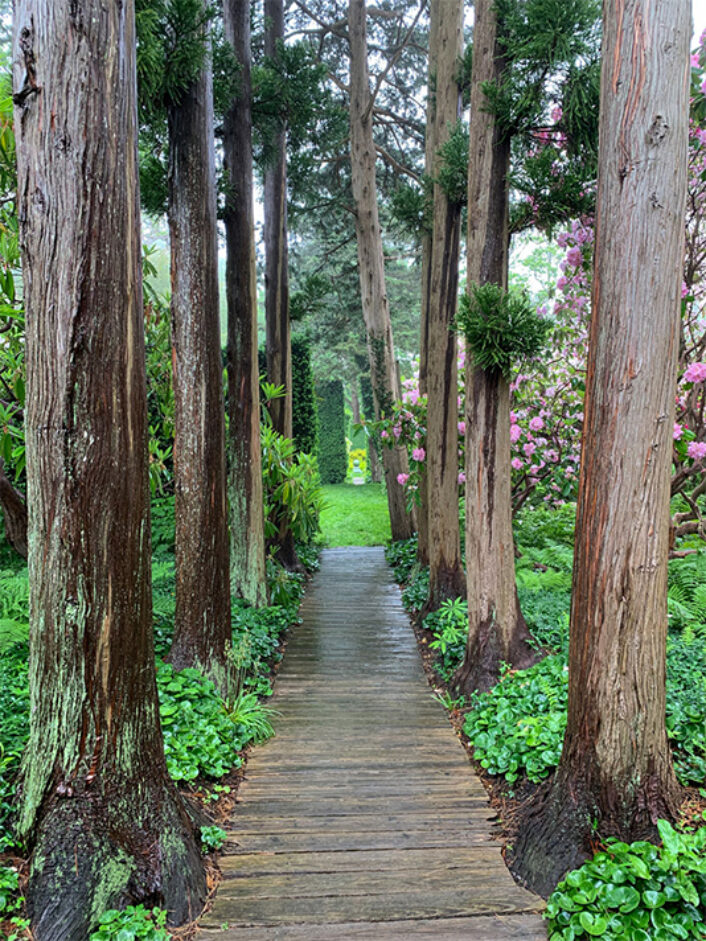Architecture
The magical grounds of an estate in Connecticut
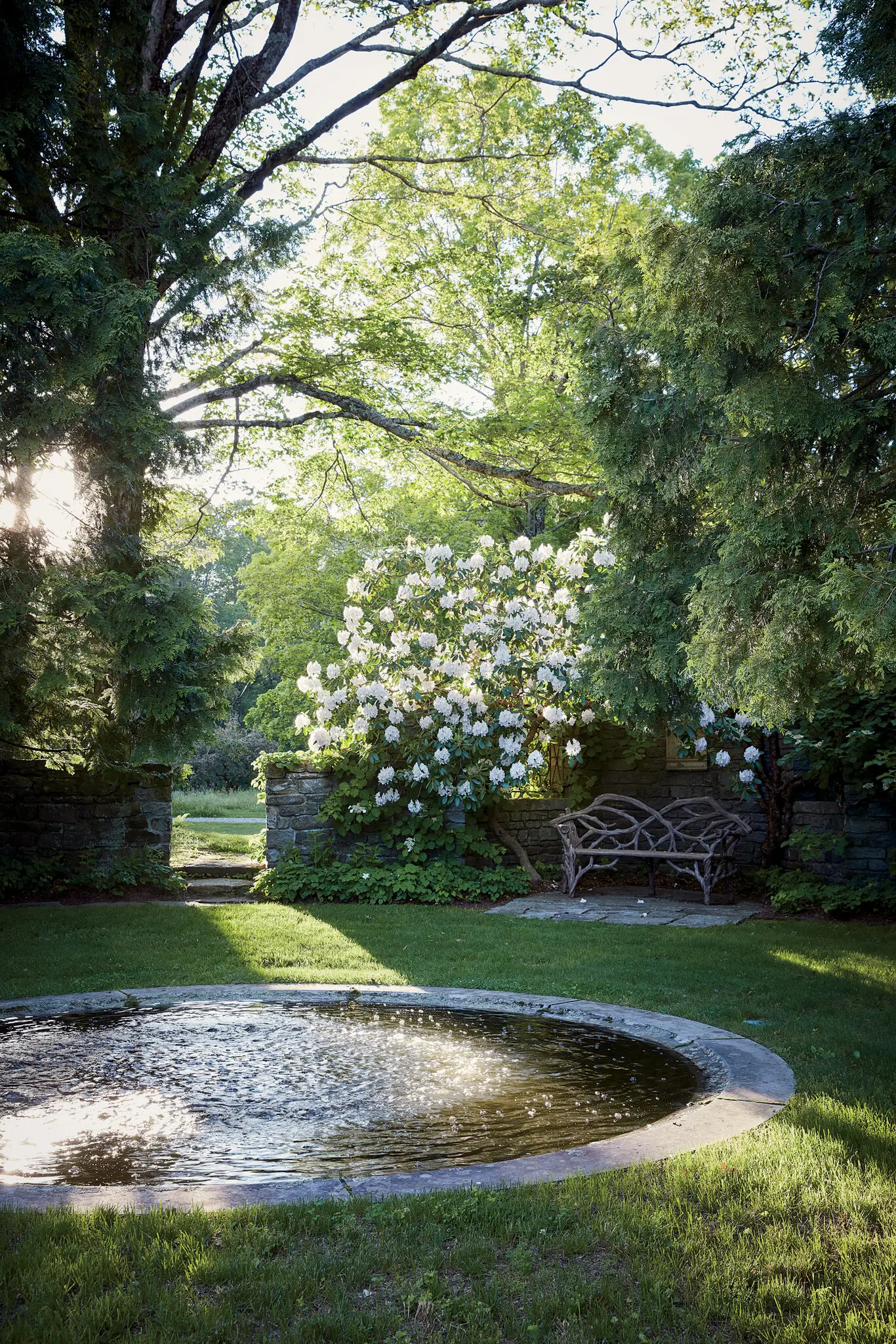
White rhododendron hang over a rustic bench near a reflecting pond on the house’s front lawn.
Image courtesy of: The New York Times Style Magazine, photographed by: Ngoc Mihn Ngo
In rural Connecticut, maintaining a property’s natural observatory seems to be an unspoken rule. Susan Sheehan and John O’Callaghan, the new owners of a storied 1920s estate in the northwestern part of the state, had no illusions about the project they would be taking on when they purchased the property with twenty rambling acres.
Unfortunately, the previous owner believed that the landscape “be left up to its own devices…” in other words, untouched. Finding Dan Pearson proved to be kismet; in the landscape design world, Pearson has become (courtesy of The New York Times Style Magazine), “known for designs that burnish nature rather than taming it.” As such, Sheehan and O’Callaghan felt as though Pearson was the one who would breathe life into their property’s neglected landscape.
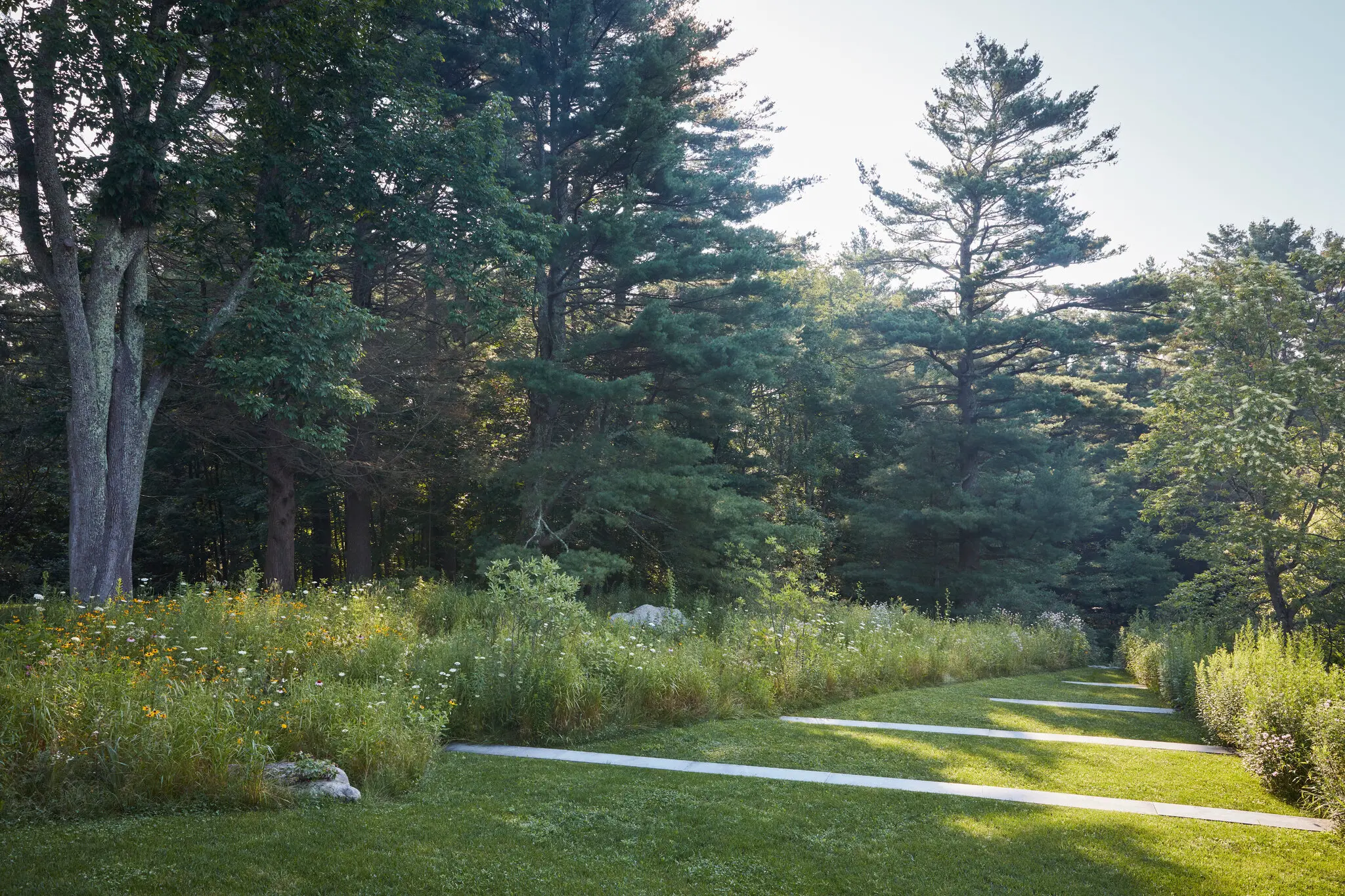
In order to get from the house to the woodlands, one must walk on elegant stone-edge grass steps.
Image courtesy of: The New York Times Style Magazine, photographed by: Ngoc Mihn Ngo
Most of Pearson’s clients desire a less structured, more free style… a divergence from rigidity. The owners of Robin Hill were no different; especially with a surroundings that had not been clearly defined in years, Sheehan and O’Callaghan knew that wilderness and cultivation would need to co-exist.
Pearson believes in constructing a natural topography with native plants. For Robin Hill, this meant working with the encroaching forest on the estate’s boundaries. Additional difficulties had to do with temperature as the location happens to be in the coldest area of the state. Due to this, the blooming season is quite short and much of the vegetation blooms simultaneously.
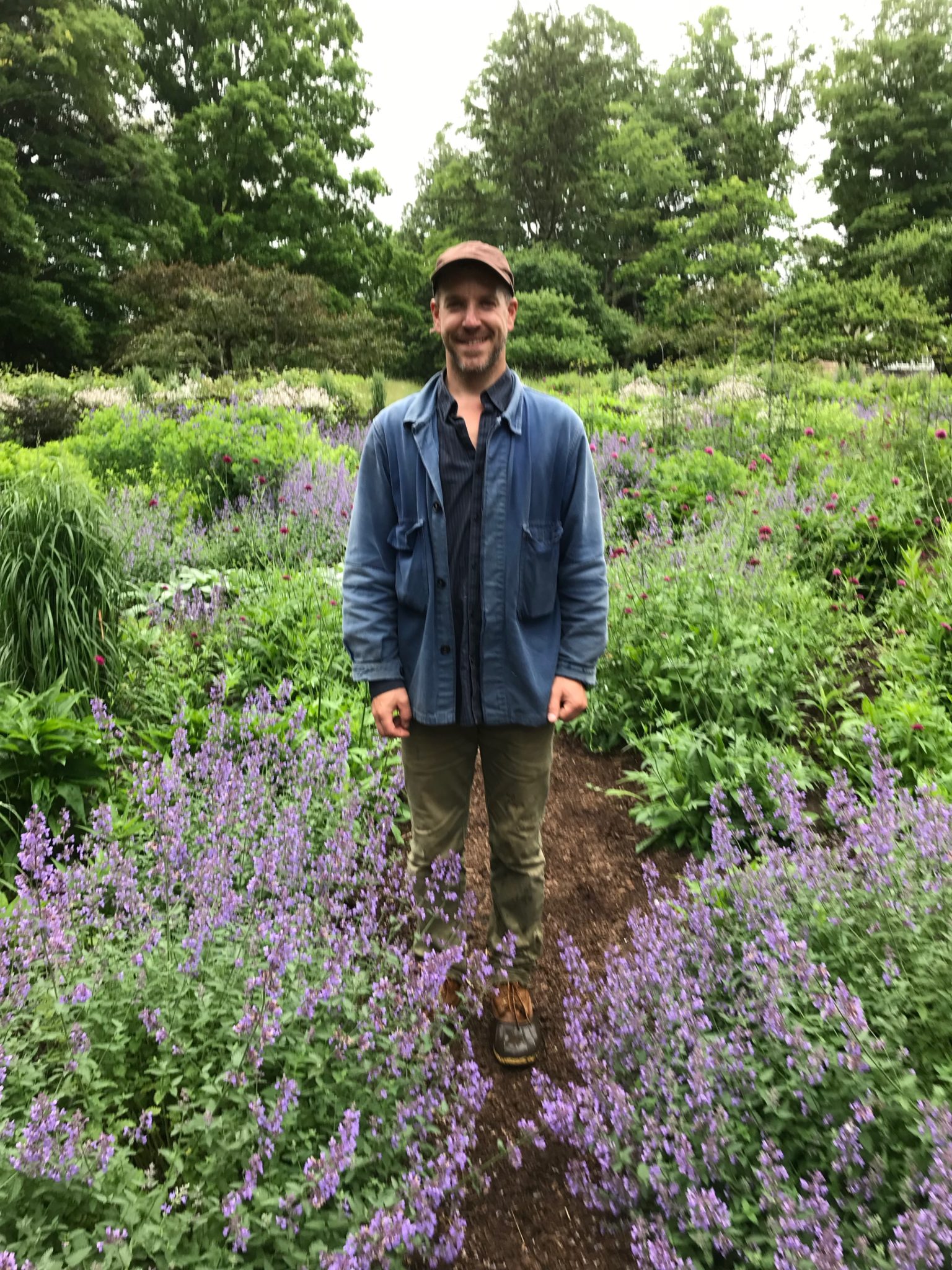
James McGrath in the beautiful space has patiently cultivated. Much of McGrath’s work calls for battling the invasive species that have been attaching the meadow for many years.
Image courtesy of: Robinson Gardens
One thing that made the design easier was the house’s many entrances and elevations; these features allowed for greater simplicity in tying the many areas together. The “braided network of paths” installed were designed to work in conjunction with the hardscape that was installed in the 1980s. Pearson was vigilant to highlight the: “dry stone walls terracing the site and a round reflecting pong overlooking the cobblestone arrival court, as well as several small shingled outbuildings for tools and a groundskeeper’s office.”
It was an arduous task to revive the meadow which the previous owner had mowed flat. Not surprisingly, the “incredibly complicated ecosystem” requires a full-time head gardener, James McGrath, and two assistants. McGrath says that he plants more than 1,000 plugs of native plants each year.
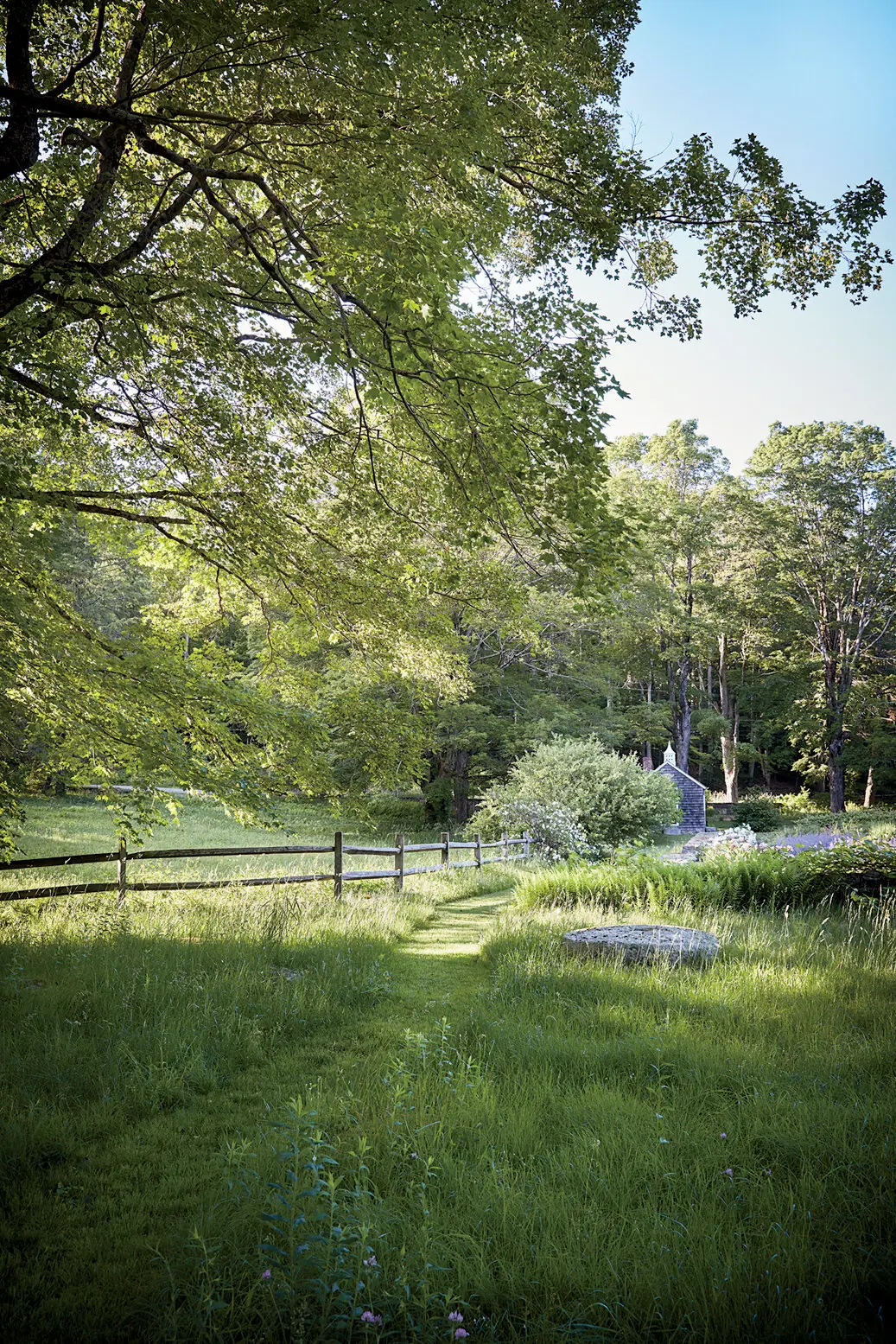
Rustic fencing delineates the space from the country to the cutting garden.
Image courtesy of: The New York Times Style Magazine, photographed by: Ngoc Mihn Ngo
The outdoor property will always remain a “work-in-progress” which is just the way Pearson likes it. Not that he isn’t busy as it is… the British designer has already written five books among other accomplishments such as being a garden columnist at The Telegraphy and The Observer and creating stunning landscapes for the “Who’s Who.” Pearson is indeed one of the United Kingdom’s most famous horticulturalists.
Designs adhere to the company’s mission that (courtesy of Dan Pearson Studio’s website): “Every decision we make is grounded in an acute sense of place and a deep understanding of how natural environments affect human emotions.” And, “We do not impose a preconceived style on our projects, but respond sensitively to the atmosphere and mood of a site, with the aim of distilling and imparting its unique character.”
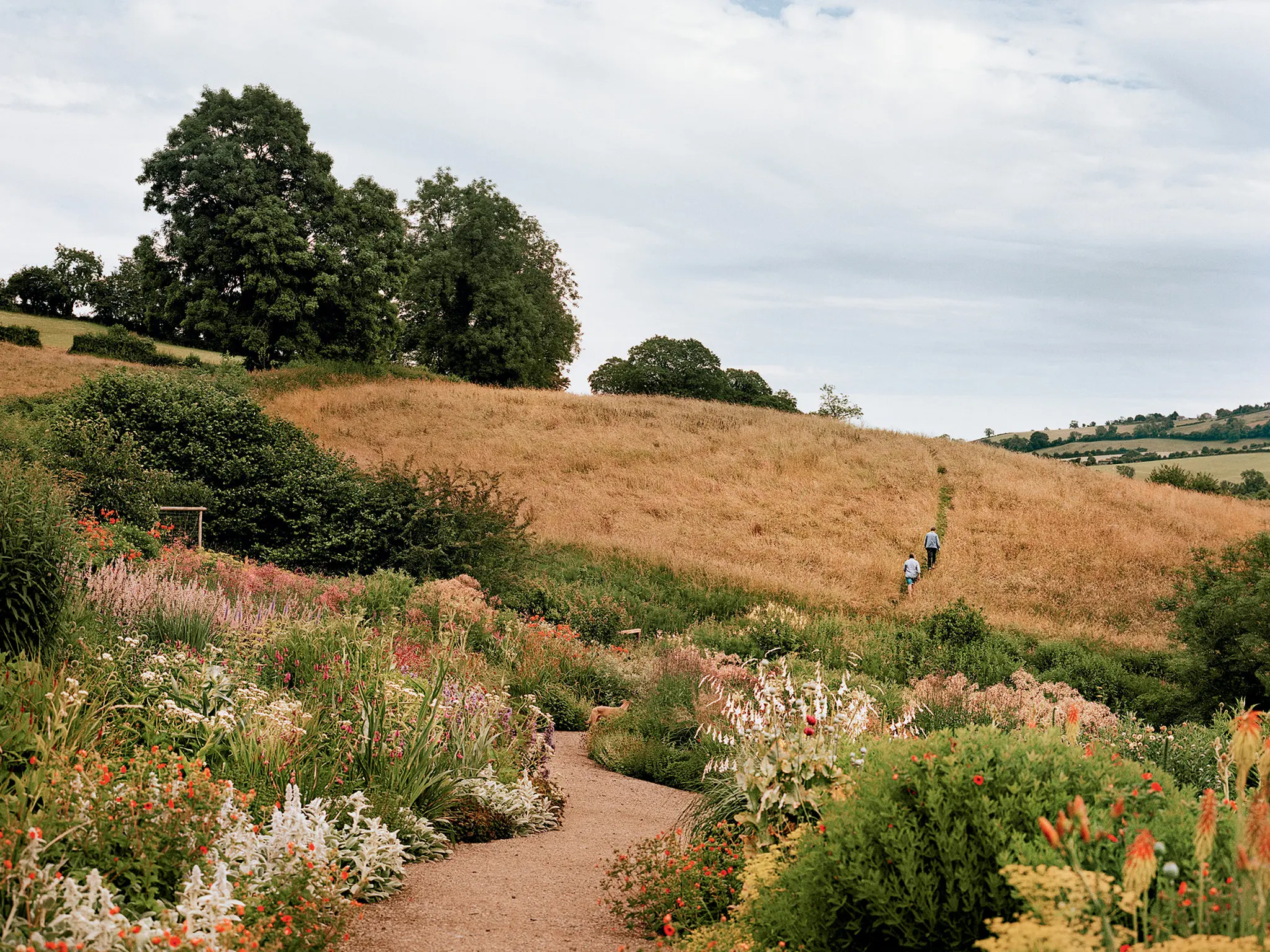
In the English countryside, Pearson and his husband, Huw Morgan, walk up a mown path in the wildflower meadow.
Image courtesy of: The New York Times Style Magazine, photographed by: Alex Armanet
Pearson has tinkered with his own garden in Somerset, England for more than a decade. His country refuge is a 20-acre estate where he treats the green public spaces restoratively rather than recreationally. Always in demand, Pearson has traveled the globe to work on projects from Jerusalem to Madrid to Japan… the common thread remains the desire to “create beautiful environments which bring people close to nature and experience the soulful, restorative qualities of plants.” Mission accomplished!

